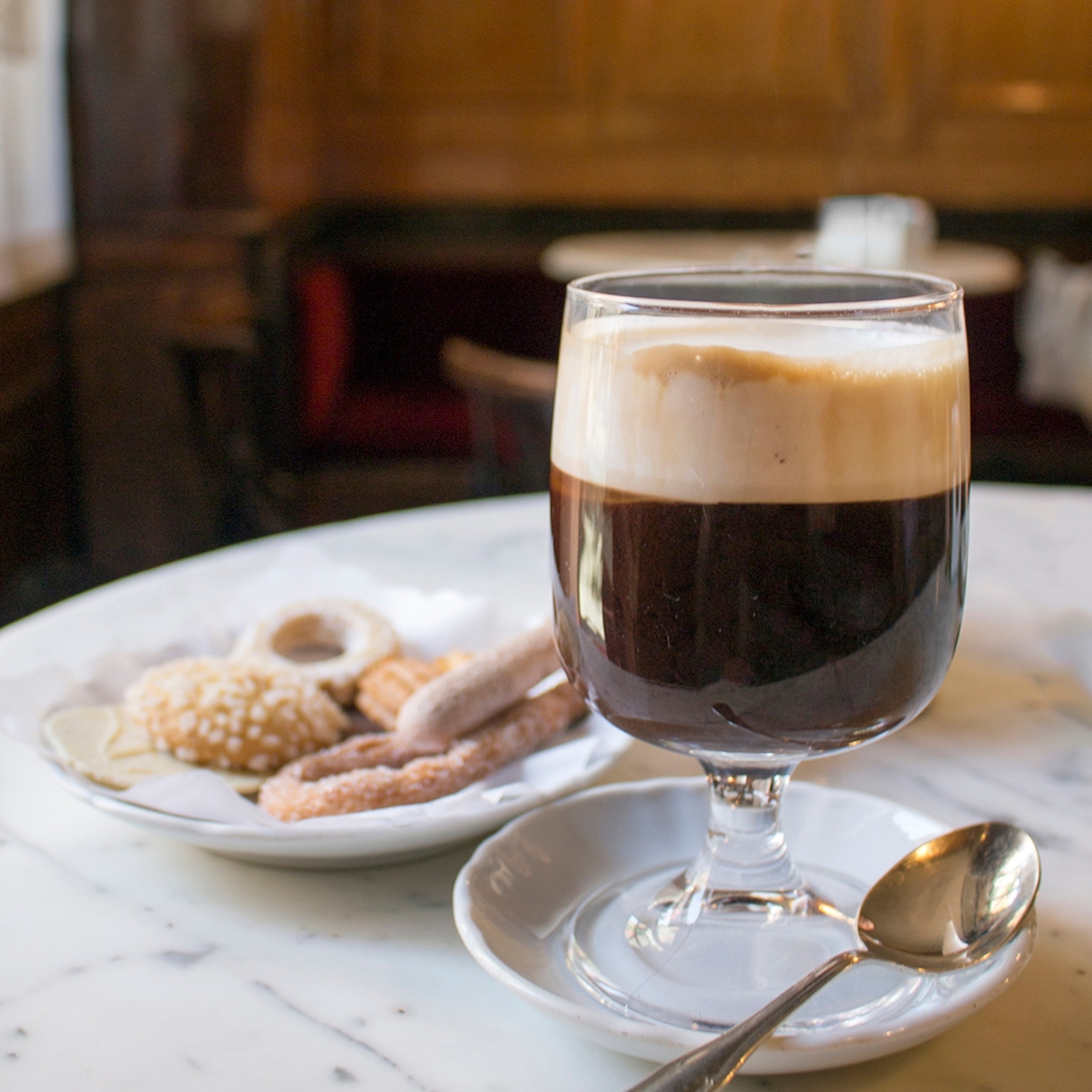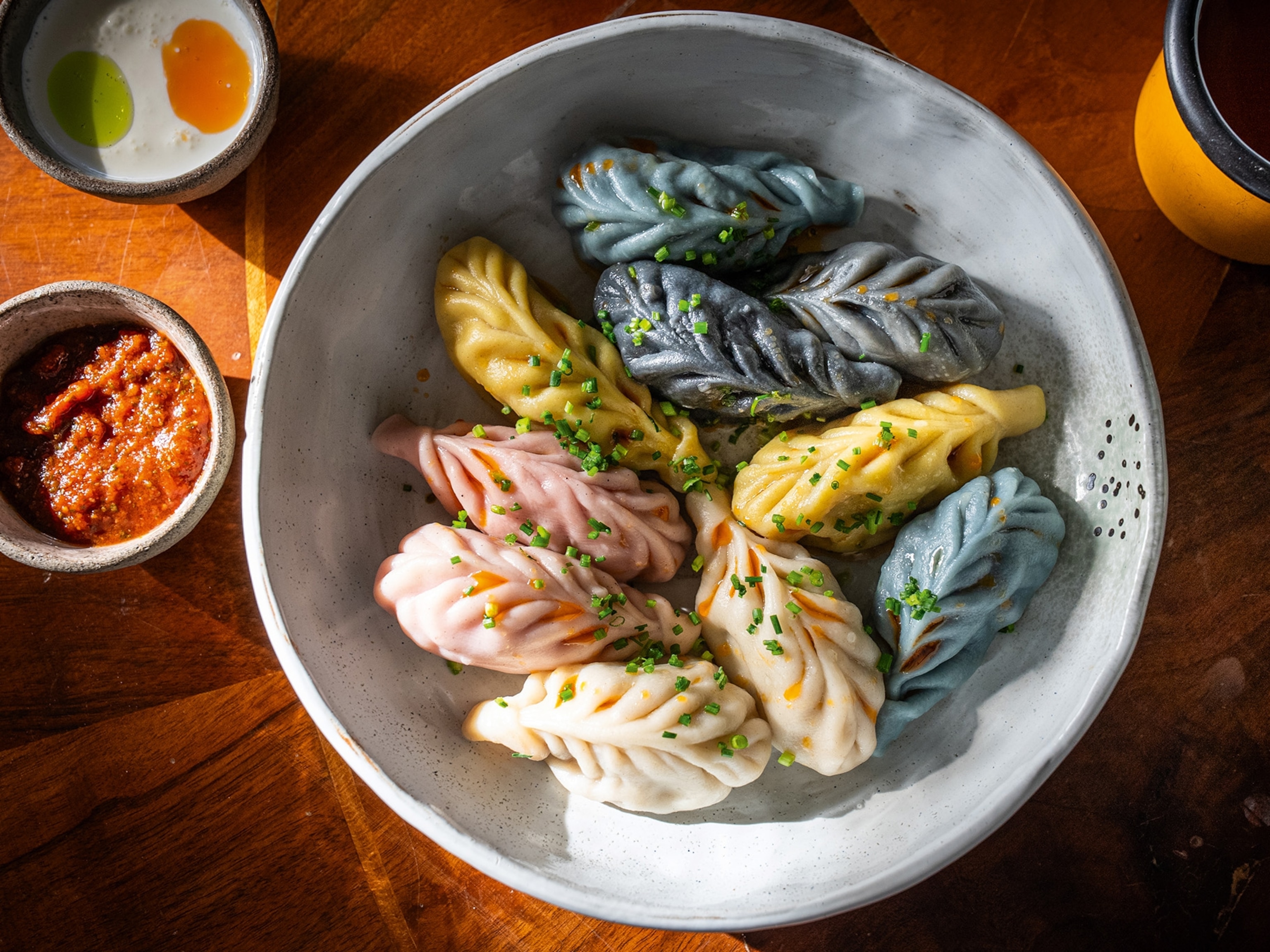
Lasagne: the history and countless variations of a true Italian classic
Sloppy or sturdy? Meaty or veggie? Cheesy or cheese-free? Lasagne has an official definition, but there are countless variations across Italy and beyond.
To understand the nature of lasagne, ask not what it is or how it’s made but who’s eating it. Like many world-wandering dishes, lasagne is not so much a recipe as a reflection of human taste, in all its wild variety. Ancient Greece can lay some claim to being its birthplace, with laganon. This is said by some to have been the first pasta — sheets of dough cut into strips — from which the Romans likely took the name for their lagane, the basis for lasagne patina. Little is known about this trailblazing dish, except that it called for the inclusion of sow’s belly and fish. Since then, however, it’s travelled the globe, evolving and acquiring innumerable iterations.
Lasagne is codified as a classic of Bolognese cuisine by the Accademia Italiana della Cucina (an organisation dedicated to preserving Italy’s culinary heritage). It defines it as spinach egg pasta layered with ragu and bechamel. Yet, there are plenty of variations to be found, and the dish’s multifarious nature is evident by the fact that entire cookbooks have been dedicated to it. Lasagna, A Baked Pasta Cookbook, by Anna Hezel and The Editors of Taste, offers 128 pages of recipe inspiration, as well as the revelation that the common Americanism ‘lasagna’ is the word for a single sheet of pasta; ‘lasagne’ is the correct name of the dish, the final ‘e’ indicating the plurality of pasta layers.
Within what’s considered lasagne’s native region, Emilia-Romagna, the classic Bologna ragu comes in subtly different forms, depending on where you eat it. Veal and offal may be added to the varying quantities of beef and fatty pork used to make the hand-cut mince. This is then sauted, sweated or braised in some form of fat (not always olive oil), along with a soffritto of finely chopped onion, celery and carrot that should melt to an indistinguishable base.
It’s essential that the ragu is cooked for a minimum of two hours; another thing purists insist on is that garlic and herbs need not apply (apart from a touch of nutmeg in the bechamel). Canned tomatoes are banished in favour of a smidge of tomato purée; the liquid element comes from a touch of meat broth, wine or milk. And mozzarella doesn’t get a look in. In fact, melted cheese — beloved of pasta bakes worldwide — is eschewed in favour of bechamel, and a sprinkling of Parmigiano-Reggiano on top — a nod to Emilia-Romagna’s finest formaggio.
But lasagne isn’t always made with such purist zeal; its ubiquity means it’s often made badly. So badly, in fact, that here in the UK many Italians and Italophile Brits won’t touch the stuff. Italian chef Giorgio Locatelli bemoaned the British version as being closer to sloppy shepherd’s pie, while the ‘bad lasagne years’ is what Guardian food writer Rachel Roddy called the time she endured growing up in England before moving to Rome. This era of stodgy school dinners and 1980s ready meals taking lasagne’s name in vain almost wrote the dish off for many. In truth, lasagne in the UK is still often made with overcooked pasta, blotchy bechamel and a runny ragu that’s at best a distant relative of the Bolognese version. And that’s nothing compared to the more heinous crimes committed against lasagne, including Iceland’s chicken tikka version (now discontinued) and Tesco’s lasagne sandwich.
Often seen as somewhat old-fashioned, classic lasagne is shunned by many of the UK’s smarter contemporary Italian restaurants and is more likely to be found on the menus of a Chianti-wielding neighbourhood trattoria, served alongside fried mozzarella balls. Where the dish has endured is on the shelves of the supermarket. And it may come as a revelation to devotees of the ready-meal varieties — posh ones included — that lasagne is meant to be quite a dry dish. It should have notable structural integrity, standing to attention, not coming undone in a puddle of sauce. It should be possible to divide into neat, straight-edged portions. But it should still be delicate and moist, giving way to the cut of a fork like a good mille-feuille, without any of its layers making an individual bid for freedom. And when it’s good — as it would be in most Italian homes, where it’s a staple Sunday lunch — there’s little that can touch it for velvety, indulgent comfort.
As the great pasta sheet shortage of the March 2020 lockdown proved, Brits class this key lasagne ingredient — along with toilet roll — as an essential item. But it should be used to make comforting food, not lazily made comfort food. Lasagne is a dish that takes time — particularly if you roll the pasta yourself, carefully construct your creation with a slow-cooked sauce and scratch-made bechamel, resting it for an hour before baking. A labour of love it might be, but even cheffy creations have nodded to its home-cooked nature. Massimo Bottura’s dish, The Crunchy Part of the Lasagne, for example, paid homage to the element of the bake that many families have drawn knives over: the slightly burnt corners.
Bottura’s recipe, originally served at his Modena restaurant Osteria Francescana, lives on at Francescana at Maria Luigia, another of his restaurants (also in Modena). It features a single pasta sheet — fried, toasted and seared — topped with a meat ragu and bechamel. Back in 1993, an even more ambitious creation was cooked up by chef Mark Ladner, the then executive chef at Mario Batali’s now defunct New York restaurant Del Posto. This Princess and the Pea-inspired, 100-layer, Italian-US hybrid included mozzarella, ricotta, marinara sauce and dried, wavy pasta sheets, hinting at how loosely the dish can be interpreted.
The aforementioned Accademia Italiana della Cucina defers to the Bolognese version, but many Italian regions have their own signature style, from Le Marche (with sliced truffles) to Molise (served in a broth). In Sardinia, lasagne is made with wafer-thin pane carasau (flat bread), which is also known as carta da musica (‘sheet music’) due to its sonorous crunch.
In Campania, the region surrounding Naples, you’ll find lasagne di carnevale. This recipe, made for a pre-Lent carnival blowout, calls for a rich tomato sauce with pork, ricotta, mini pork-and-veal meatballs, hard-boiled eggs, salami and local caciocavallo cheese. The ribs and sausage used to flavour the tomato sauce are often kept for the next course.
High days and holidays are lasagne’s natural preserve. Italy’s traditional meatless Christmas Eve meal, lasagne al forno, a speciality from the Dolomites, comes with spiced apples and nuts. And meatless versions are more common than you’d think. In the northern region of Liguria, lasagne Genovese substitutes ragu for the region’s exquisite pesto, made with the sweet leaves of the basil plants that thrive on coastal mountainsides, combined with creamy bechamel and topped with parmesan and pine nuts. Sometimes called lasagne alla Portofino, after Liguria’s jewel-like bay town, it’s just one of the countless plant-based versions that have seen the dish claim veggie and vegan fans. Across Italy, you’ll find roasted squash, lentils, and mushrooms as ragu ingredients, with milk alternatives such as almond often used for the white sauce, perhaps given a savoury flavour-boost with the addition of nutritional yeast.
Lasagne sheets, meanwhile, don’t have to contain egg. The preferred pasta of the Italian south comprises water, salt and flour, and plenty of shops sell dry versions, albeit without the spinach called for in the classic Bolognese recipe. You can make your own, perhaps adding nettles, the green that some say predates the use of spinach here. But those shop-bought dry pasta sheets (eggless or otherwise) are a win for home cooks. Unlike fresh egg pasta, they’re more likely to hold lasagne’s proud angular form, and ready-made sheets win back some prep time that can be spent perfecting the ragu and bechamel. Buon appetito!
Giorgio Locatelli’s lasagne
This recipe uses 10 sheets of fresh pasta, but if you’re using dried sheets, you’ll need about 20 — and you should add a splash more milk to the bechamel to keep it moist.
Takes: 3 hrs
Serves: 6-8
Ingredients
10 sheets fresh egg pasta (approximately – or make your own, see recipe below)
4 tbsp parmesan, grated
For the ragu
2kg minced pork, preferably neck
5 tbsp olive oil
2 carrots, finely chopped
1 celery stalk, finely chopped
2 onions, finely chopped
sprig of rosemary and sprig of sage, tied together
2 small garlic cloves, peeled
1 bottle of red wine
1 tbsp tomato paste
1 litre tomato passata
200ml chicken stock (optional)
For the bechamel
1.5 litres milk
a pinch of nutmeg
90g butter
90g plain flour
Method
Start with the ragu. Take the meat out of the fridge and lay it on a tray, then press it down and let it come to room temperature.
Heat the oil in a wide-bottomed saucepan, then add the vegetables, herbs and whole garlic cloves and sweat over a high heat for 5-8 mins without allowing it to colour (you’ll need to keep stirring).
Lightly season the meat with salt and pepper, then add to the vegetables, making sure the meat is covering the base of the pan. Leave for 5-6 mins, so the meat seals underneath and heats through completely before you start stirring. Take care that the vegetables don’t burn — add a little more oil, if necessary, to stop this happening.
Stir the meat and vegetables occasionally for about 10-12 mins until the meat starts to stick to the bottom of the pan.
Pour in the wine and let it reduce right down to virtually nothing, then add the tomato paste and cook for a couple of minutes, stirring constantly.
Add the tomato passata and 250ml water. Bring to the boil, then turn down to a simmer and cook for about 90 mins, adding a little of the chicken stock, if necessary, from time to time until you have a thick sauce.
Meanwhile, prepare the bechamel. Put the milk and nutmeg in a pan with a pinch of salt and pepper and bring to the boil, then take off the heat. Melt the butter in a saucepan, then gradually add the flour and cook, stirring, over a low-medium heat for a couple of minutes. Slowly add the milk mixture and whisk until it has thickened.
Heat oven to 190C, 170C fan, gas 5. Blanch the lasagne sheets in a pan of salted, boiling water for a couple of minutes, cooking them two or three at a time and ensuring they don’t stick together. Drop them into cold water, then lay them on a cloth to dry.
Spread a thin ladleful of bechamel over the base of a 30 x 20cm ovenproof dish. Add a layer of pasta sheets, then cover with a ladleful of ragu, followed by a ladleful of bechamel and a sprinkling of the parmesan. Repeat this pattern to build five layers, finishing with the plain bechamel and lots of parmesan. Cook for 30-40 mins, then leave to rest for 20-30 mins before serving.
Giorgio Locatelli’s fresh egg pasta sheets
Ingredients
500g pasta flour (00, or ‘doppio zero’ in Italian)
3 eggs, plus 2 egg yolks; all large, and at room temperature
You’ll need
A pasta machine
Method
1. To make the pasta, sieve the flour into a clean bowl, then turn it out into a mound on a clean surface and make a well in the middle. Sprinkle a pinch of salt into the well, then crack in the eggs and add the yolks. Have a bowl of water on one side, so you can dip your hands into it and wet them, to help bring the dough together if it’s being stubborn towards the end of kneading. To begin, break the yolks with the fingertips of one hand, and then begin to move your fingers in a circular motion, gradually incorporating the flour, until you have worked in enough to start bringing it together in a ball. Work the ball of dough by pushing it with the heel of your hand, then folding the top back on itself, turning it a little clockwise and repeating, again and again, for about 10 mins, wetting your hands if it helps, until the dough is springy but still feels quite firm and difficult to work. (If you’re using a food processor, sieve the flour into the bowl, add the salt, then start the machine, and slowly add the egg yolks, followed by the whole eggs. Keep the motor running slowly, or it will heat up the pasta too much — ‘beat’ rather than mix. Once the dough has come together, take it out and put it on a clean work surface.) Don’t worry if the dough feels hard; after it has relaxed for a while, it’ll be perfect.
2. Divide the dough into two balls, wrap each in a damp cloth and allow to rest for about 1 hr.
3. To roll the pasta, work the first ball of dough with a rolling pin (keeping the remainder covered in the damp cloth), until it’s about 1cm thick and will comfortably go through the pasta machine. If it’s too thick, the pasta machine will have to use so much force to make it go through that it will damage the machine and squeeze out too much moisture in the process, resulting in dry pasta. There isn’t an exact number of times you’ll need to feed the pasta through the machine — each time you make it, it might be slightly different (and not every pasta machine has the same number of settings), but use the next few steps as a guide, and after a while you’ll get the hang of it and feel your own way.
4. Put the machine on the first (thickest) setting to start with, then feed the piece of rolled-out pasta dough through the machine, turning the handle with one hand and supporting the dough as it comes through with the other. Change to the second setting and put the pasta through again. Repeat another 2-3 times, taking the setting down one each time. Don’t worry if the pasta appears slightly streaky — this should disappear as you carry on rolling it. If you don’t have a pasta machine, use a rolling pin and work the dough until it’s wafer thin. It’ll be quite firm, so you’ll need to use a lot of force and careful folding. Add a pinch of flour if the pasta sticks to the work surface.
5. Cut the strip of pasta in half and keep one half covered in a damp cloth. Fold the length of the other half into three, bringing one end in and the other over the top of that, so the pasta is the same width as the machine. Roll it out with the rolling pin so it’s no more than half a centimetre thick, then put the machine back onto the first (thickest) setting again and feed the pasta through — do it the opposite way this time (widthways, rather than lengthways), as changing direction can add elasticity and strength. Keep feeding the pasta through this way, taking it down two or three settings as you go. Fold the pasta back on itself, then put the machine back onto the first (thickest) setting and take it down again through the settings until it’s about 1.5mm thick. By now, the pasta should be nice and shiny. Cut it into strips the same size as your dish and cover with a humid cloth. Repeat with the remaining pasta dough.
Published in Issue 13 (autumn 2021) of National Geographic Traveller Food
Follow us on social media
Facebook | Twitter | Instagram







